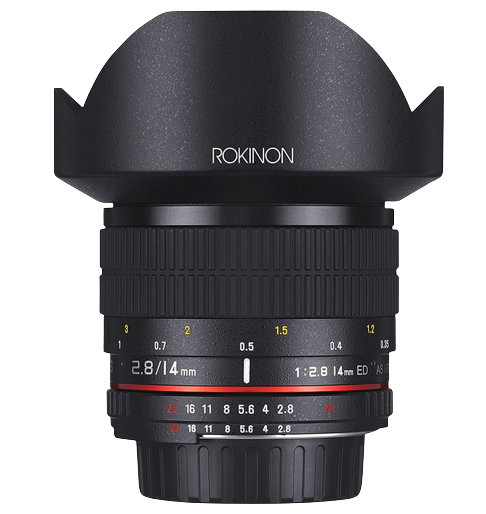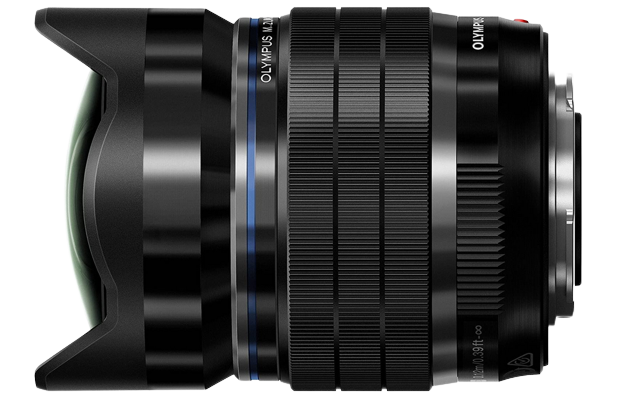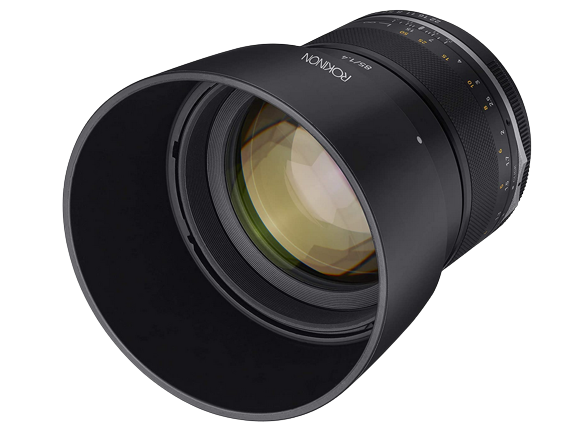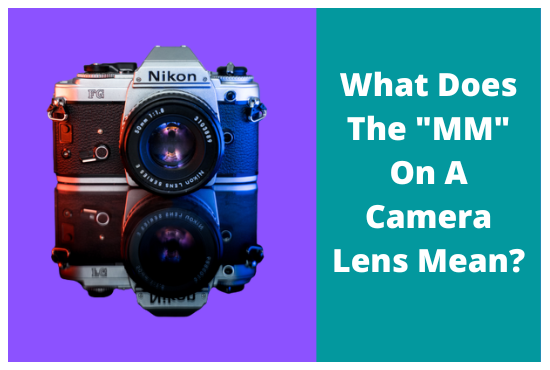As an Amazon Associate I earn from qualifying purchases.
The mm is short for millimeter, a unit of length used often in measurements that are very small. When you see the mm on the lens of your camera, you know that it’s referring to its diameter. Millimeters are commonly used to measure the size of lenses because they’re a unit of measurement small enough to make sense in that context.
In photography, lenses have focal lengths and diameters. The focal length measures how much bend there is in the lens; it’s related to how zoomed in or zoomed out you are from your subject. The diameter is the biggest measure of a lens and tells us something about how wide or narrow the light can get through it.

Contents
3 Things to Know About the MM On Your Lens
If you’re reading this, you’re probably curious about the mm on your lens. So let’s start there. First, when you see the mm on a lens, it refers to the diameter of the lens. It’s also called the “focal length” because it tells how zoomed in or zoomed out you are from your subject.
If you look at a lens, you’ll notice it has a diameter. This diameter is measured in millimeters. The diameter is a big factor in how much light can get through a lens. A wide diameter lens lets in more light than a narrow diameter lens. And the last thing you should know is that the diameter of a lens is the most important factor when it comes to depth of field.
Depth of field is the amount of focus in your image, from the closest thing to the camera to the furthest. It’s often used as a creative tool in photography and videography, like blurring out the background to focus on the subject.
Wide angle Lens
A wide-angle lens has a shorter focal length, while a telephoto lens has a longer one. Most wide-angle lenses are 35mm or smaller. Telephoto lenses start at 70mm and go up from there. Wide-angle lenses cover more of the scene, while telephoto lenses cover only a small part of the scene. You probably call it “zoomed out” and “zoomed in”.

Lenses with different focal lengths serve different purposes. For example, if you’re shooting wildlife, you’ll want a lens with a longer focal length (100mm is the minimum, but at least 300mm is optimal) so you can get optically close to your subject without worrying about spooking it. On the other hand, if you’re shooting architecture,
you might want a wide-angle lens (35mm or smaller), because with a wide-angle lens you can capture the entire subject in a single shot without having to back up a quarter of a mile.
How You Measure The Diameter of a Lens
The diameter of a lens is what’s most commonly measured in millimeters, which are abbreviated “mm.” You can find the diameter written in a few different ways; it’s often the first thing written on a lens. It’s on either side of the lens, written in white letters.
To measure the diameter, you’ll need a ruler and a bit of patience. Lens diameters are almost always in metric measurements, as opposed to imperial measurements. The mm on a lens might also be written as a “58mm” or “58D,” meaning that the diameter of the lens is 58mm.
This may be written on the lens itself, but if it isn’t, you can find this measurement by measuring the outside of the lens. Put your ruler on the outside of the lens and find the measurement.
Why Is Diameter Important?
A lens’s diameter determines how much light it can let in. Photographers like lenses that let in as much light as possible because it means they can get better pictures in low light with a faster shutter speed.
The diameter of a lens also determines how much depth of field you get in the photograph. You can use this to your creative advantage to blur the background or focus on a particular subject.
What Does “MM” Mean On A Fisheye Lens?
If you see “MM” on a fisheye lens, it means that the lens is a “180mm f/2.8” lens. This is a fisheye lens with a 180mm diameter and a 2.8 focal length. Fisheye lenses are a type of lens that gives you a wide, circular field of view with a strong visual distortion.

They’re great for immersive photography and 360-degree video. The 180mm diameter is important because it’s what determines the amount of light that gets through the fisheye lens. The bigger the diameter, the more light the lens lets in and the brighter the image becomes.
The fisheye lens’s 180mm diameter also determines how much depth of field you get from the lens, from the closest thing in your image to the furthest.
What Does“MM” Mean On A Telephoto Lens
If you see “MM” on a telephoto lens, it means that the lens is a “300mm f/2.8.” This is a telephoto lens with a 300mm diameter and a 2.8 focal length. Telephoto lenses are often used for sports and wildlife photography.

They have longer focal lengths, letting in less light, but they’re also more powerful. The 300mm diameter is what matters with a telephoto lens because it determines how much light the lens lets in and how much depth of field you get in your image.
A longer diameter lens lets in less light than a shorter diameter lens, and a larger diameter also means less depth of field.
Bottom line
The mm on a lens is the diameter, or how wide the lens actually is. This diameter is written in mm on a lens, and it’s important because it determines how much light a lens lets in and how much depth of field you get from it.
If you see “MM” on a lens, it’s telling you what the diameter of the lens is in millimeters. This is the most important factor when it comes to depth of field, and it also determines how much light a lens lets in.
As an Amazon Associate I earn from qualifying purchases.

